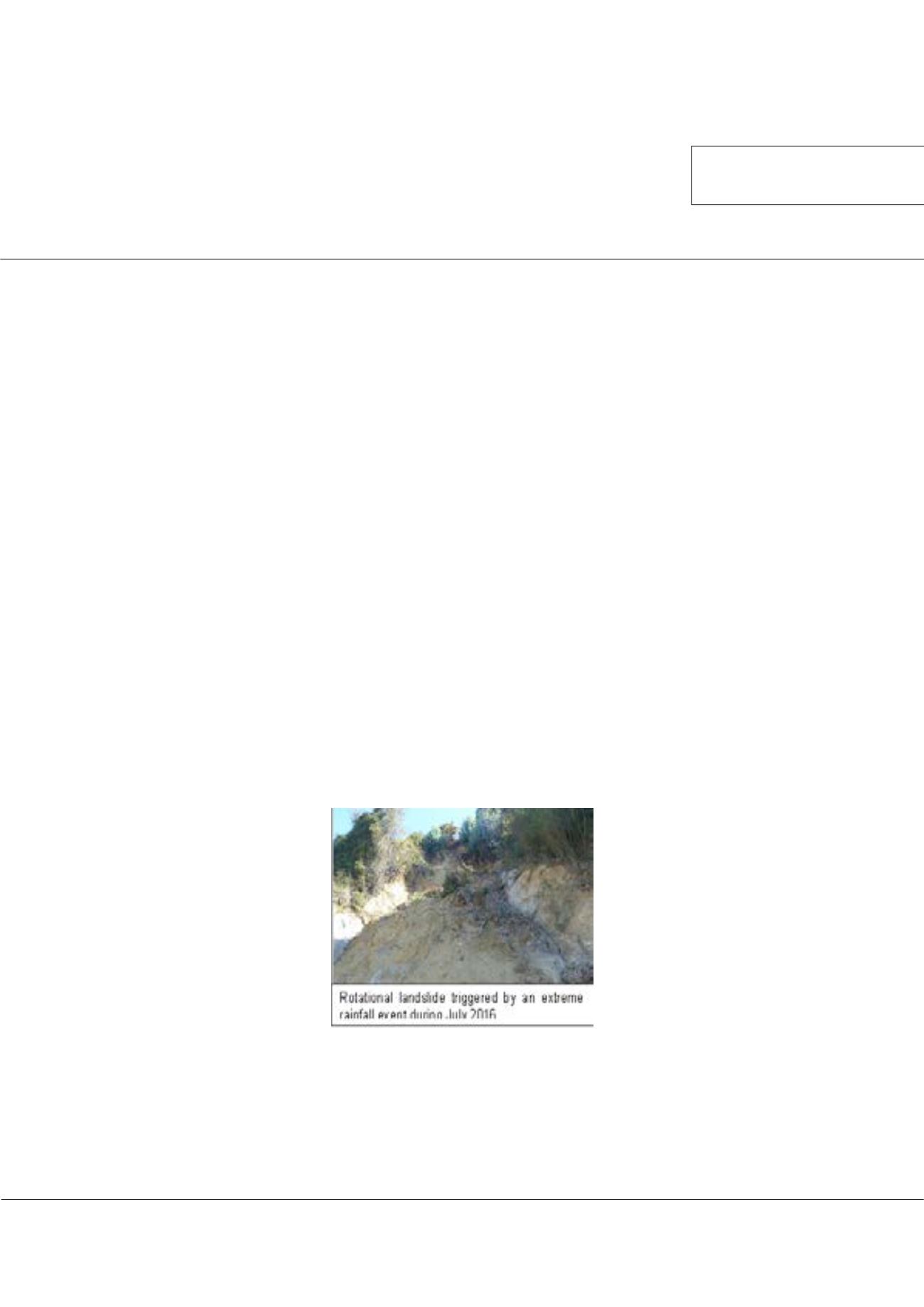

Page 94
conferenceseries
.com
Volume 2
Environment Pollution and Climate Change
ISSN: 2573-458X
Climate Change 2018 &
Global ENVITOX 2018
October 04-06, 2018
October 04-06, 2018
London, UK
16
th
Annual Meeting on
Environmental Toxicology and Biological Systems
&
5
th
World Conference on
Climate Change
JOINT EVENT
Landslide susceptibility models in Tumbes Peninsula, South-Central Chile coast (36°S)
Pablo López Filun
1
, Carolina Martínez
2,3
, Cristian Henríquez
2
and
Jorge Qüense
2
1
University of Bristol, UK
2
Pontifical Catholic University of Chile
3
Research Center for Integrated Disaster Risk Management, Chile
I
n the last few decades, the recurrence associated to landslides has evidenced a significant increased, especially in urban areas,
where the effects related to these types of processes have generated human losses and infrastructure damages. In Chile, there
is still no standardized methodology for assessing areas prone to landslides on a regional and local scale, consequently in the
past years many efforts have been made to incorporate different methodologies from an institutional aspect, especially to guide
territorial planning from a disaster risk management view. In this context, the purpose of this research is the application of the
Linear Generalized Model (GLM) and the Generalized Additive Model (GAM) in the East coast of Tumbes Peninsula (36°S)
to compare their predictive performance and their integration capacity as a methodology to guide territorial planning and
risk management at local scales. The landslide susceptibility in Tumbes Peninsula (36°S) was evaluated through multivariate
statistical methods. An analysis of the physical - natural factors of greater contribution to the susceptibility was made and the
processes of greater recurrence and spatial activity were recognized. The analysis of the physical - natural factors was done
through soil cover, geomorphology and derived models. The process recognition was carried out through the elaboration of
a landslide inventory, where the lithological structure and type of movement associated with each process were identified.
The susceptibility level was determined through the comparison of a Generalized Linear Model (GLM) and a Generalized
Additive Model (GAM), where the areas of greater susceptibility to landslides processes were identified. The elaboration of the
landslide inventory indicated that the rotational landslides are the most active, these were characterized by being conformed
in a lithologic structure of silt - clay, loamy type, very fragile under saturation, during periods of intense precipitation. The
execution of GLM and GAM models indicated a good spatial prediction of susceptibility with AUCROC values of 0.913 and
0.990. However, the level of significance of the predictor variables presented less statistical evidence in the GLM model with
an AIC value 177,7 and greater significance in the GAM model with an AIC value of 10,2 indicating the high precision of the
GAM model in the spatial estimation of susceptibility.
Biography
Pablo López Filun
, Ph.D. in Civil Engineering student, University of Bristol, U.K. MSc in Geography, Pontifical Catholic University of Chile and BSc in Geography,
University of Concepcion, Chile.
pablo.lopezfilun@bristol.ac.ukPablo López Filun et al., Environ Pollut Climate Change 2018, Volume 2
DOI: 10.4172/2573-458X-C1-003
















